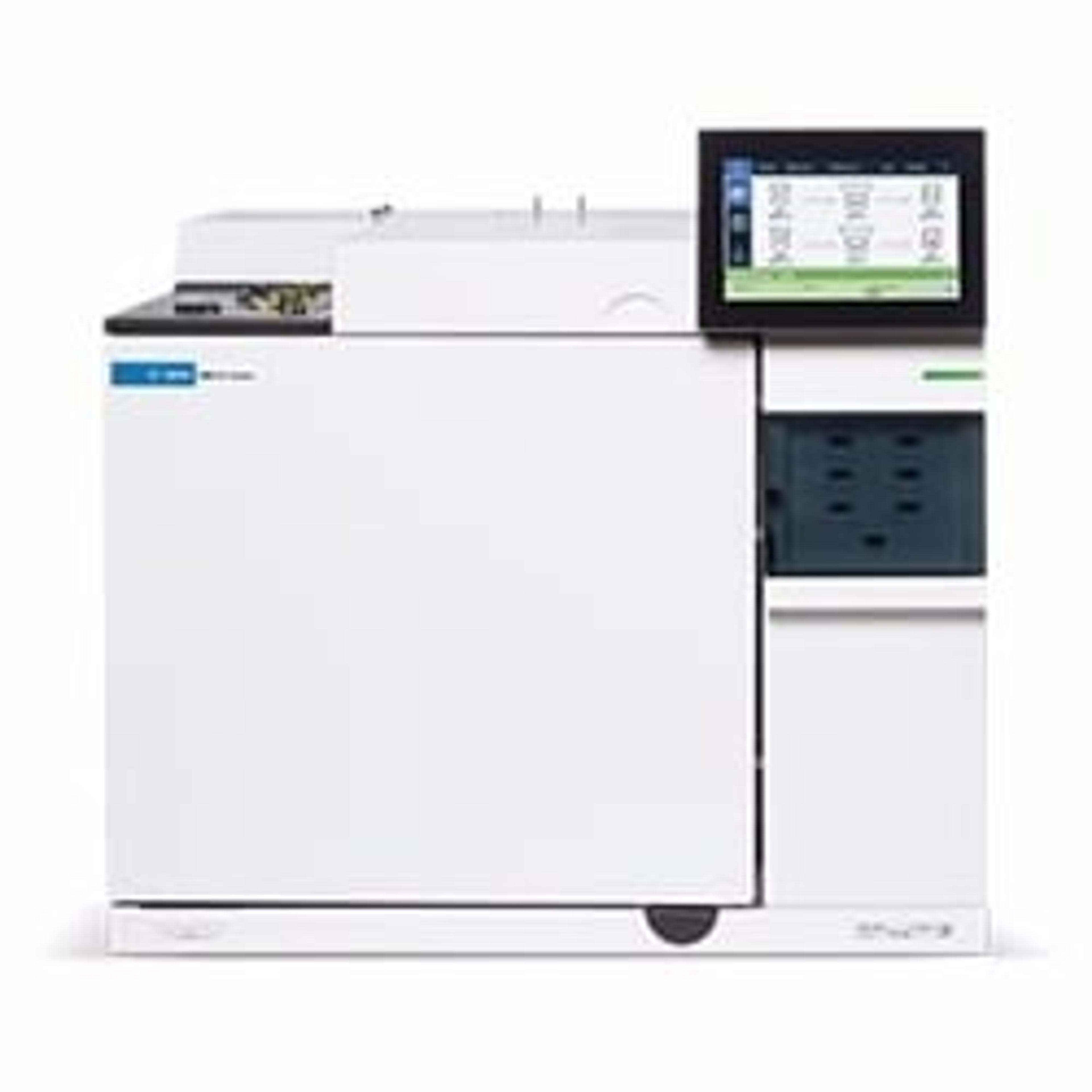A total workflow for multi-class, multi-residue analysis of pesticides in fatty food matrices: Your questions answered
Watch this on-demand webinar to learn strategies for sample preparation, instrument method development and optimization, plus workflow applicability to their practical applications
13 Sept 2020

The determination of pesticide residues in fatty food matrices is a difficult challenge due to the small quantities of analytes and large amounts of interfering substances which can be co-extracted with analytes and, in most cases, adversely affect the results of an analysis.
In this on-demand SelectScience® webinar, Limian Zhao, application scientist and Dr. Xia Yang, senior application scientist at Agilent Technologies, present a complete workflow for the analysis of multi-class, multi-residue pesticides in fatty food matrices including milk, salmon, and vegetable oils. From sample preparation through to analysis using either GC-MS/MS, LC-MS/MS, or both, the entire workflow is designed to provide a simple and efficient sample extraction and fatty food matrix cleanup with accurate and precise analysis for both LC and GC amenable pesticides.
Read on for highlights of Zhao’s insights from the live Q&A session or register to watch the webinar at any time that suits you.
Register NowQ: Are there any potential challenges that could affect the outcome of results and analysis?
LZ: This protocol or procedure was developed and validated especially for the challenge of fatty foods mitosis. We demonstrated the application in milk, salmon, and oil, but it can also be applied to other fatty matrices like meat. However, for water analysis, the extraction will be different because when considering the sample prep protocol, we must consider the matrix, not just the analytes. Your procedure needs be specially designed for efficient matrix removal analytes. For water analysis, you will not need the Captiva EMR-Lipid cleanup because water generally doesn't contain too much oil or lipid matrices, with the exception of specific samples of course.
Q: Will the use of Captiva EMR-Lipid cleanup impact pesticide recovery?
LZ: Captiva EMR-Lipid solvent is a proprietary sorbent from Agilent, and the interaction with the target “bulky” analytes is limited because the sorbent interacts selectively with the lipid type of molecules which contain the long aliphatic chain. For most pesticides, the retention of pesticides is minimal, based on our tests on many compounds, including not just pesticides. You don't have to worry about the loss of pesticides, but for special pesticides that contain similar structural feature like long straight chains as lipid molecules, it can show partial retention. As for other side interactions, it is possible, but from our observations and testing so far, the impact on pesticide recovery is limited to less than 5% of the whole pesticide family.
Q: Ammonium fluoride is not a common additive for LC mobile phase. What are the pros and cons of using this salt in the mobile phase?
LZ: In the case of ammonium fluoride, it is a relatively new additive used for the typical LC-QQQ, but it is compatible to LC-QQQ at least. We do notice that the use of this additive especially improves negative mode analyte sensitivity. For the others, since it's still relatively new, the impact still needs to be widely tested to learn about its advantages and limitations.
Q: What are the advantages of 8890 versus 7890, and how do they compare with the Intuvo?
LZ: The 8890 is our new Agilent GC platform. It is flexible and expandable to meet your needs. It features a powerful next-generation electronic architecture and extended smart-connected functionality, which is suitable with different inlet detectors and accessories, among them DFT, Deans’ Switch, backflush, two-dimensional GC and outdoor simultaneous injection. From our comparisons, we also noticed that the 8890, coupled with the 7010, provides a high-speed gradient, improved sensitivity and chromatography. The Intuvo has a smaller footprint by comparison. It provides a faster temperature increasing gradient. The small size also saves a lot of lab space. It has click and run direct connections and uses the guard chip instead of traditional inlet liner for the sample introduction, which makes the maintenance and installation more convenient. This new generation of GC systems introduces a lot of new concepts and will help especially with intelligent assumptions for easy control and quick analysis.
Q: For multi-residue methods involving fatty matrices and matrices with HIG pigmentation and polyphenols, which LC/MS is better, Agilent Ultivo TQ or Agilent 6470 CTQ?
LZ: From our experience, the two instruments are quite comparable. On one hand, the Ultivo is a small, compact instrument. Performance-wise, their respective sensitivities are highly comparable, but sensitivity also considers how you treat, clean, and extract your samples. It is hard to say which one is better, as that depends on your sample cleanup and extraction efficiency.
Q: Butter is 80% milk. Can EMR-Lipids be used for analyzing this?
LZ: Yes, we did have some application notes for mycotoxins in butter, and it works well. For multi-pesticides residue in butter, we have not tried that, but I do not see why it would not work. There could be some twisting on the extraction because the matrix of butter is different from milk and it does not contain large amounts of water. However, on the necessity of EMR-Lipid cleanup, lipid removal is certainly needed for the butter matrix.
Q: Did you calculate the absolute recovery of analytes? Did you need to use isotopically labeled or procedural standards to calculate the results?
LZ: Yes, we do calculate the absolute recovery of analytes. We use the pre-spike and post-spike for recovery evaluation. For pre-spike, the analyte is spiked into the matrix and it goes through the extraction procedure. In post-spike, it is spiked into the matrix blank, then we compare the peak area for the recovery calculation. For the actual qualification method, we do use stable-labeled internal standards for qualification to correct all the variances or errors introduced from the workflow, including sample prep, or method instrument detection.
Q: Can you suggest a clean-up for QUEChERS eggs extraction?
LZ: Captiva EMR-Lipid cleanup can address this application need very well, providing efficient and selective lipid cleanup from the egg matrix. We do have an application note for vet drug analysis in eggs using QuEChERS extraction followed by Captiva EMr-Lipid clean-up. The crude sample extract from QuEChERS extraction is basically in 100% ACN, so mixing with 20% water prior to sample loading is very important.
Q: Can this be applied to cannabis analysis by separating the cannabinoids from pesticides?
LZ: Cannabis matrices, such as leaves or flowers, are not considered fatty matrices, therefore, Captiva EMR-Lipid cleanup may not be the most efficient way to clean this sample matrix. Agilent does provide a total workflow for pesticide analysis in cannabis, including sample preparation and instrument detection. Please visit our website for more information.
Q: Is this method only suitable for pesticides or can be used for other analytes such as minerals?
LZ: Yes, the methodology should be able to extend to other analytes, but there could be minor modifications needed for analytes with different features. As we always emphasize, the sample preparation method depends tightly on targeted analytes, sample matrix, analysis requirements, and detection method.
Q: Have you seen losses of hydrophobic pesticides when using the lipid removal material?
LZ: Lipid molecule interactions with EMR sorbent are not just hydrophobic, they are based on the combinatory mechanism of size exclusion and hydrophobic interaction. Only molecules with long single chains, like lipids, can be trapped on the sorbent. This special interaction mechanism greatly reduces the unwanted retention of other “bulky” hydrophobic molecules during sample treatment. However, the extraction of hydrophobic compounds from fatty food matrices could be quite challenging, especially in oil. In our experience, QuEChERS extraction may result in some hydrophobic compound going back to the oil layer during salt partition. Therefore, we used direct solvent extraction. In our oil extraction protocol, 20% ethyl acetate was added to the extraction solvent ACN to improve the solvent strength and extract hydrophobic targets from the oil matrix.
Q: Can a high percentage of pesticides be removed during extraction from oil?
LZ: During method development, we did evaluate pesticide recovery from each step, separately. Pesticide extraction from oil was challenging, especially for hydrophobic pesticides. In order to improve extraction efficiency, we applied many strategies during extraction, such as the addition of 20% EtOAc in extraction solvent, using multiple extractions, having longer mixing times, using solvent extraction instead of QuEChERS extraction, etc. All of these strategies improved the extraction recoveries. In fact, without good recoveries from the extraction step, we wouldn’t get satisfactory recoveries for the entire sample prep method. For more details, please check our publication: Zhao L., Szakas T. et al. J. Chromatogr. A, 2019, 1584, 1-12.
Q: What causes lower recoveries in these methods where EMR cartridges are used along with QuEChERS?
LZ: QuEChERS extraction involves the use of water, either from the sample matrix or addition during prep. The salt partition is then used to separate organic and aqueous phases. For oily/fatty matrix, there’s actually a third layer, an oil layer, generated after partition. This oil layer may actually retain the hydrophobic analytes, and thus cause the loss of these analytes from the organic layer. Therefore, for fatty matrices like oil, it is QuEChERS extraction that causes some analyte loss, not EMR cartridges. The loss happens during extraction, not during cleanup.
Q: Is the QuEChERS method recommended for biological samples like blood and plasma or urine? If not, do I need to modify this method to suit these samples?
LZ: For biological sample matrices like blood, serum, and plasma, we do not recommend using QuEChERS extraction. Firstly, the applications involved for these matrices usually have a limited sample size. QuEChERS extraction is inconvenient for small sample size extraction, and sample volume loss caused by salt partition could be quite significant. Secondly, salt partition followed by necessary separation certainly adds more steps for small biological sample preparation, and it is difficult to adopt for high-throughput sample preparation for bioanalysis. Usually, protein precipitation extraction (PPT) is widely used for biological matrix sample preparation, and Captiva EMR-Lipid cleanup can be easily adopted after PPT extraction and provide >99% of phospholipid removal from blood. We have many application notes published for bioanalytical applications. Please check the Captiva EMR-Lipid product page for more information.
Learn more about multi-residue analysis of pesticides in fatty food matrices: Watch this webinar on-demand >>
Do you use Agilent products in your lab? Share your first-hand experience to help scientists make the best decisions for their lab >>


